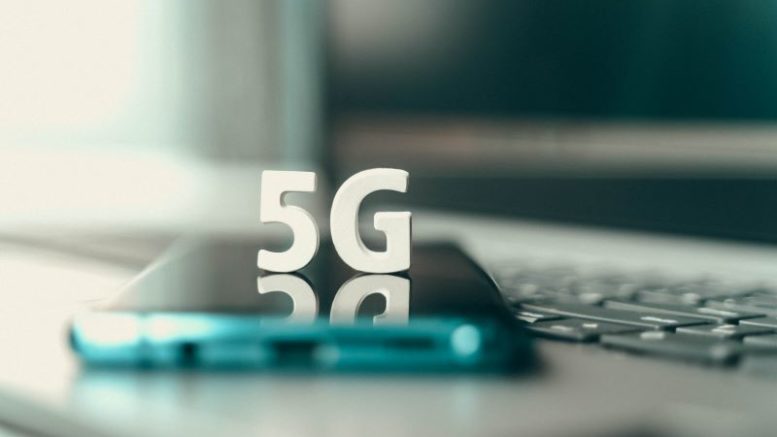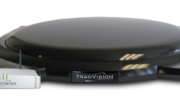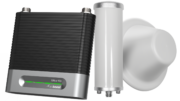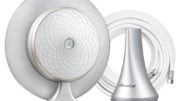Reprinted with permission from the WilsonPro blog.
From lightning-fast data rates to greater bandwidth, 5G represents a massive step forward in the evolution of wireless technology. As the world becomes increasingly connected, underlying network infrastructure plays a significant role in achieving full-spectrum 5G connectivity.
Between the excellent coverage of low-band frequencies to the incredible capacity of mmWave, mobile network operators (MNOs) now set their sights on the “Goldilocks of frequencies” — C-Band 5G. Early in 2021, telecom companies bid just over $81 billion for over 5,600 C-Band licenses. Verizon and AT&T collectively spent $67 billion on C-Band in efforts to fill gaps in their existing 5G service offerings.
The two telecom giants launched 5G C-band on January 19, 2022. After launch, Verizon CEO Hans Vestberg shared that “2022 is probably [the] most important year in the history of Verizon. This is day one of the network, and we have so much more to do.” On a similar note, AT&T Technology Operations EVP, Chris Sambar writes, “Today’s introduction of C-Band spectrum begins turbo-boosting our 5G wireless service.”
While C-Band deployments may be new for Verizon and AT&T, T-Mobile maintains an existing mid-band 5G footprint. After acquiring Sprint in 2020, T-Mobile had a significant head start when it comes to mid-band spectrum rollouts. As T-Mobile CFO Peter Osvaldik explains, “We’re going to continue to be two years ahead of the game.”
There’s no question that 2022 is set to be a huge year for C-Band 5G deployments. Here’s a look at what makes mid-band frequencies special and how businesses can leverage cellular repeaters to keep pace with the ongoing mid-band rollouts.
What Is C-Band 5G?

5G is a performance specification with a 1 Gbps+ data rate and less than 1ms latency. There are three ways carriers can achieve 5G performance:
- Low-Band 5G (carrier aggregated): Aggregates the 4G low-band highway to achieve 5G performance levels.
- Mid-Band 5G (C-Band): Balances the better data rate of high bands with the better range of low bands.
- High-Band 5G (mmWave): Brings the fastest data transmission available to users but has a limited range.
As the middle ground of the 5G spectrum, mid-band cellular service offers a balance between high data rate (the best data rate is in high band) and range (which is best in low band). Infrastructure for mid-band services is currently being developed and deployed by the major carriers. Because these frequencies balance the need for fast data and more connected devices with longer range, C-band is truly the future of 5G for most of the world.
MNOs will leverage the full spectrum of 5G frequencies to provide the best possible service to customers and businesses nationwide. C-Band is essential for operators to achieve both coverage and capacity in their 5G network offerings.
What Frequencies Are Available in C-Band 5G?

C-band frequencies recently became commercially available through Federal Communications Commission (FCC) auctions. These auctions allow operators to purchase licensed radio bands for commercial use.
Commenting on the most recent C-Band auction, FCC Acting Chairwoman Jessica Rosenworcel explains “It is essential to America’s economic recovery that we deliver on the promise of next generation wireless services for everyone, everywhere. This auction reflects a shift in our nation’s approach to 5G toward mid-band spectrum that can support fast, reliable, and ubiquitous service that is competitive with our global peers. Now we have to work fast to put this spectrum to use in service of the American People.”
C-Band frequencies fall between 3.7 GHz and 3.98 GHz. Here’s a breakdown major US carriers 5G networks and the frequencies they operate:

As a result of the C-Band auction all major US carriers, Verizon, AT&T, and T-Mobile, operate full-spectrum 5G.
Why Is C-Band 5G Important?

Taken together, 5G spectrum allows for greater versatility and incredible potential across a variety of use cases. Operators are able to maximize available spectrum assets by operating across low-, mid-, and high-band frequencies.
Ultimately, this versatility allows carriers to provide different levels of capacity and coverage — depending on geographic area and performance needs. C-Band spectrum strikes the perfect balance between 5G capacity and coverage.
Capacity
To illustrate capacity, it’s important to understand that 5G has screaming-fast speeds at the highest frequencies. However, those lightning-fast speeds only happen when connected to a high-band mmWave 5G cell tower. 5G speeds are dependent on the radio frequency bandwidth of the 5G transmission.
If a user accesses 5G on a lower frequency tower, download speeds will still be faster than current 4G standards. With limited frequency bandwidth, performance will fall significantly short of 5G mmWave performance standards.
Coverage
Another important factor in understanding 5G, coverage is the effective distance from the 5G cell tower that a cell signal can travel without disruption.
Higher frequencies mean greater capacity but shorter coverage. Here, we see an inverse relationship between 5G capacity and coverage. If a user is close to a mmWave 5G tower with clear line of site, then they can expect blazing-fast downloads. However, because higher frequency 5G signals have higher propagation loss, that same user will quickly lose access to their speedy connection should they move too far away from the tower.
Conversely, if a user accesses 5G signal from a low-band cell tower, they can travel miles away from the tower and still enjoy enhanced 5G performance. But with greater coverage, comes reduced capacity and slower data rates. Users will either enjoy high data rates from a super-close, high-frequency 5G cell towers, or they will have slower signals from a low-frequency 5G cell tower that’s farther away.
Fortunately, C-Band provides a middle ground on the 5G spectrum. Mid-Band 5G signals are the sweet spot that balances both capacity and coverage. Users can enjoy relatively fast data rates across a larger coverage area.
5G Edge of Coverage
One big problem with 5G is the ability for signals to penetrate signal-blocking materials. With buildings being made of metal, concrete, and low-E glass, signals either bounce off or get attenuated. The higher the frequency, the the more difficult it is for the signal to penetrate structures. Whether connected to low-, mid-, or high-band 5G, high-frequency signals become unreliable as soon as the user is indoors. This phenomenon is the called the 5G Edge of Coverage (EOC).
WilsonPro technology extends the EOC. No matter the frequency band, Wilson is dedicated to detecting available 5G signal and bring that signal inside. Ultimately, repeater technology is a critical component in delivering 5G where it’s needed most.
Extend Mid-Band 5G With WilsonPro

Carrier networks are continually working to build and deploy the infrastructure needed to support 5G. However, providing access to reliable 5G signal is often easier said than done. As 5G frequencies go higher, their ability to penetrate concrete, brick, metal, energy-efficient glass, and other common building materials quickly diminishes.
The WilsonPro Enterprise 1337R is compatible with mid-band 5G frequencies operating at 3.7 to 3.8 GHz. Upgrade existing WilsonPro systems with this 5G-exclusive repeater that amplifies and extends C-Band coverage. The unit also includes secure remote management with built-in LTE connectivity. Businesses with existing WilsonPro solutions can upgrade Enterprise 1300 and Enterprise 4300 systems to support additional 5G coverage.
Curious about what WilsonPro can do for your network? Reach out today to speak with a product expert or to request a quote. Call 888-233-7563 during East Coast business hours to speak to a professional.





